Bass, EP’s, perch and saratoga flies
{{start}}
{{end}}
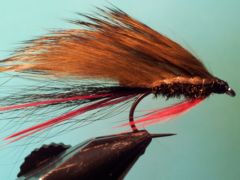
{{+1}}Bass special – Chatto’s original{{-1}}
{{start}}
It's no surprise therefor that I have a cousin to my trout bag , perhaps with a little influence from the yeti fly, in my bass fly box. Unlike the trout bag fly I seldom fish this fly as a single fly but find that if fished fished on a dropper about 1.2 meters above one of my preferred point flies it works like a dream.{{end}}
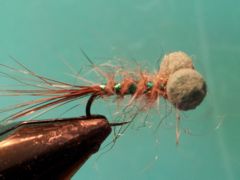
{{+1}}Hares ear booby{{-1}}
{{start}}
This is a nifty little fly that merges the hares ear nymph and the traditional booby both very high pedigree flies into one very useful loch fly. It also has a bit of flash about it which helps the fly fill an important role in my fly box for an attractor fly to use on my middle dropper when I loch style fish fish just before, through and after the trout spawning season.{{end}}
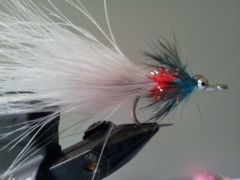
{{+1}}Gusto{{-1}}
{{start}}
This is a Peter Morse fly and a great variation on a Wooly Bugger that is making its mark in fresh water fly fishing. It's dressed on a wide gape hook that creates an effective "keel" effect and sports a relatively long marabou tail and a dense collar which together create plenty of currents around the fly that really get the marabou moving. It is adaptable for a range of species and situations.{{end}}

{{+1}}Propeller bugger{{-1}}
{{start}}
This fly is one of just 4 flies that I carry in my native fish fly box that will take fish sub-surface when surface flies are just not working. Not surprisingly it's got elements of a woolly bugger but importantly it has the bit of bling and movement that is so important to our predatory native species.{{end}}
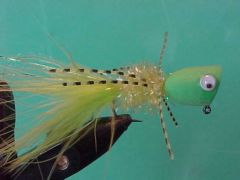
{{+1}}Popper – bass foam head{{-1}}
{{start}}
The fist and most obvious is when they are actively feeding. At those times bass can have an appetite for everything from nymphs, yabbies, small fish, shrimp, worms, lizards, frogs, grasshoppers, cicadas, beetles and for that matter almost anything that will fit in their mouth it's not surprising that a popper dropped in their line of sight and looking like something alive often gets their attention. Bass are binge feeders and are by no way picky when it comes to feeding time.{{end}}
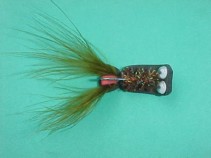
{{+1}}Wiggle frog – Chatto’s original{{-1}}
{{start}}
You can fish this fly on an intermediate or faster sinking line but my preference is to fish it on a floating line so that it swims just below the surface. On a floating line the best technique for fishing the fly is to give it one or two short strips and then rest it for a moment whilst it comes back to the surface. Rest it there for a few more seconds and then repeat the process.{{end}}
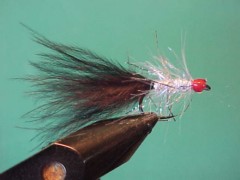
{{+1}}Silver surfer – silver straggle fritz bugger{{-1}}
{{start}}
I was ripping the black tailed version of this fly through the chop with some success when my boat partner asked what fly is that 'silver surfer'. I explained to him that it was just a woolly bugger variant tied with a black tail and silver UV straggle fritz. I tried to give it a real name such as 'silver woolly bugger' but unfortunately 'silver surfer has stuck.{{end}}

{{+1}}Tea tree beetle – variant 2{{-1}}
{{start}}
Both floating and wet beetles (including drowned terrestrials beetles and aquatic beetles) should be fished in the current with as little line drag as possible or with a very short twitching action. A nondescript well tied beetle pattern if presented in the right way when fish have beetles on their menu, more often than not, will be accepted by fish.{{end}}

{{+1}}Tea tree beetle – variant 1{{-1}}
{{start}}
One species that is a popular food source for trout is the tea tree beetle. This representation is tied in shades of black and brown colours that have stood the test of time. Many of the recipes you see use brown raffia as the wing case. I don't like raffia as a fly tying material and have substituted a hackle from the back of the ring neck pheasant. Its a similar colour to many of the recipes that have come before mine but its much more durable than the raffia.{{end}}














